#Ukrainian archeology
Photo

Ukrainian archeologist Hanna Shovkoplyas posing next to mammoth bones at the Mezine 22, one of the most well-preserved Paleolithic sites in Europe, 1950s
#archeologist#Hanna Shovkoplyas#Ukrainian archeology#vintage photography#1950s#Archeological dig#mammoth#paleolithic#vintage archeology#Mezine 22#Ukraine
119 notes
·
View notes
Text


The sword of the blacksmith Liudota is an archaeological monument of the princely era of Kyivan Rus, a decorated sword with an inscription "коваль Людота". The sword dates back to the first half of the 11th century. The sword was found in 1890 during farm work in the village of Khvoshchove, near the city of Myrhorod, Poltava region.
N.B. In the russian language, the blacksmith is "кузнец". In Belaruthian, it's "каваль".
P.S. The moral of the story is to place watermarks on your art. XD
#Ukrainian language existed muuuuuch earlier than russian#archeology#swords#kyivan rus#Ukraine#history
315 notes
·
View notes
Photo

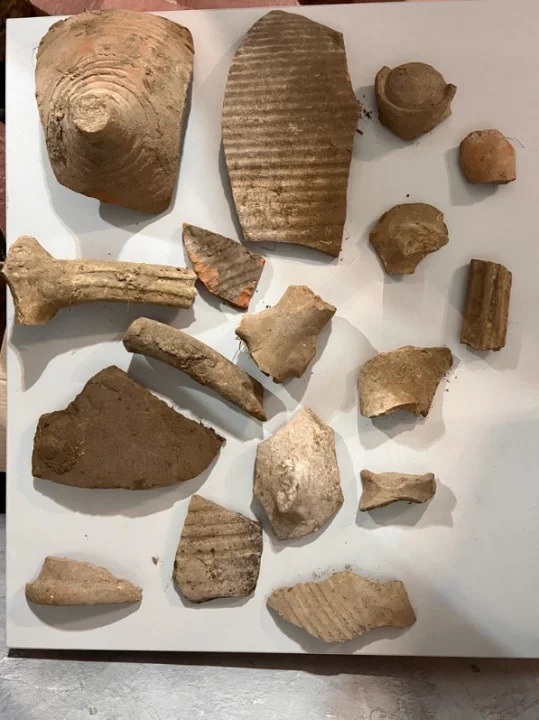

Ukrainian Troops Uncover Ancient Roman settlement in Kherson Oblast
While conducting defensive earthworks on the banks of Dnipro River in Kherson Oblast, Ukrainian border guards have uncovered remnants of an ancient Roman settlement, Ukraine’s State Border Guard Service said in a message on its website on Dec. 20.
“In Kherson Oblast, while fortifying the bank of Dnipro (River), border guards came across the remains of an ancient Roman settlement,” the message says.
“About one meter deep, fragments of amphoras and clay jars started to appear.”
The servicemen reported their find to local archaeologists. No further engineering work was done at the site, in order to preserve the valuable artefacts.
“After the victory, an archaeological expedition will begin work here,” the message added.
#ukraine#Ukrainian Troops Uncover Ancient Roman settlement in Kherson Oblast#archeology#archeolgst#ancient artifacts#history#history news#ancient history#ancient culture#ancient civilizations#roman history#roman empire
23 notes
·
View notes
Text
There are three types of Ukrainian artists. Those who were killed by russia, those who were repressed by russia and those whose legacy was stolen by russia. Armenian-Ukrainian artist Ivan Aivazovsky belongs to the third category. So here I present 6 fun facts about his life.
••••••••••••••••••••••••••••••••••
1. For almost an entire life he lived in the city of Feodosia in Crimea. He loved the city and was its patron, he financed museums, galleries and the development of the city.
For example, when the ancient Armenian church of Surb-Sarkis burned down, the restoration was carried out at the personal expense of Ivan Aivazovsky. From year to year, the painter donated the author's icons to the Church of St. Sergius - "Walking on Water" (1888; oil on canvas, 70 x 50), "The Last Supper" (1890; oil on canvas, 44 x 60), "The Virgin and Child ” (1891; oil on canvas; 125 x 103 cm), “Prayer for the Chalice” (1897; oil on canvas; 94 x 72).

Feodosia. Moonlit night, Ivan Aivazovsky, 1852, 29x36cm, oil on canvas, private collection
••••••••••••••••••••••••••••••••••
2. History and archeology were his huge hobbies. He even participated in archeological digs. Though he hated reading.

Chumaks leisure, Ivan Aivazovsky, 1885, oil on canvas, Belarusian National Arts Museum
••••••••••••••••••••••••••••••••••
3. He created his marine landscapes not on the coast but in his workshop from memory.

The Ninth Wave, Ivan Aivazovsky, 1850, 221x322cm, oil on canvas, State russian museum
••••••••••••••••••••••••••••••••••
4. He was the first Ukrainian artist to be exhibited in the Louvre.

View of the island of Capri, Ivan Aivazovsky, 1845, 40x57cm, oil on canvas, Kyiv National Art Gallery
••••••••••••••••••••••••••••••••••
5. Pope Gregory XVI (Gregorius PP. XVI; 1765-1846) unexpectedly wished to purchase a painting by an artist from Feodosia for the Vatican. So, at the beginning of 1841, the marinist repeated the seascape in his own way and, kneeling down, personally presented it to the Pontiff. Touched by the artist's noble gesture, in the late autumn of 1841, the governor of St. Peter personally awarded the Ukrainian Armenian with the Order of St. Sylvester and the Golden Militia.

Chaos. Creation of the world, Ivan Aivazovsky, 1841
••••••••••••••••••••••••••••••••••
In 2023, during the bloody occupation of the Ukrainian city of Kherson by russians, not only were thousands of civilians tortured and killed, but numerous museums were also robbed. Three paintings by Ivan Aivazovsky were stolen from the Kherson National Museum of Art, along with thousands of artefacts from all over the country. The stolen paintings are: "The Storm Subsides," "The Sea," and "View of the City of Odesa." Reminder: Such actions are a direct violation of the Geneva Conventions.
Support Ukraine!

In Ukrainian text states: STOLEN! Ivan Aivazovsky, View of the City of Odesa, oil on canvas
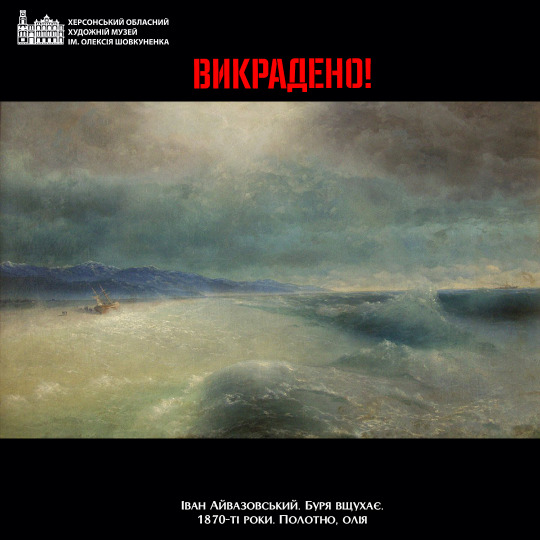
In Ukrainian text states: STOLEN! Ivan Aivazovsky, The Storm Subsides, oil on canvas
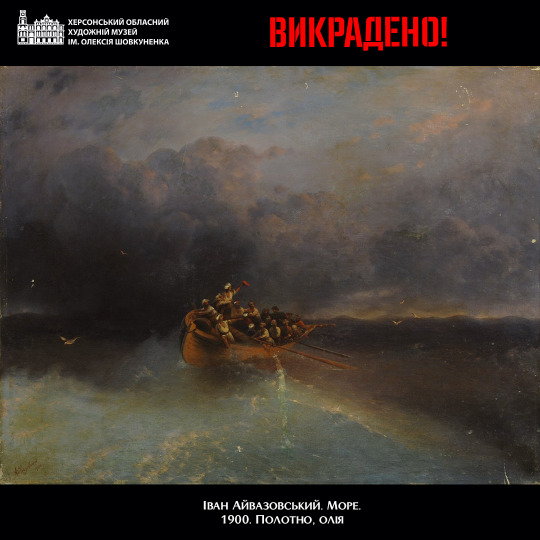
In Ukrainian text states: STOLEN! Ivan Aivazovsky, The Sea, oil on canvas
#art#art history#painting#artwork#museum#sea#ivan aivazovsky#ukrainian art#ukraine#support ukraine#russia is a terrorist state
223 notes
·
View notes
Text
Since the beginning of Russia’s full-scale war against Ukraine, tens of thousands of people have died on both sides. At least three times more Russian soldiers have already been killed in Ukraine than in the entire Soviet–Afghan War, which lasted 10 years. International humanitarian protocols dictate that the remains of the dead be returned to their families. However, despite huge losses, reports on official exchanges often speak of only hundreds of bodies, leaving thousands of people unaccounted for. Russia’s brutal invasion is plowing through densely populated areas, leaving behind immense casualties. In dangerous conditions and with an overwhelming number of dead, bodies are often temporarily buried under a thin layer of earth. Ukrainian law calls for their exhumation, autopsy, identification, and permanent reburial or repatriation. This daunting work falls to special police units, volunteer organizations, and international humanitarian workers. The independent newsletter Kit published the story of how they go about this work in the face of an ongoing war and what is done with the bodies of Russian soldiers found on Ukrainian soil. Meduza is publishing an abridged English-language version of that article.
This article was written by a Russian journalist who chose to remain anonymous for safety reasons. The author has long been involved in battlefield archeology and has worked with groups currently searching for deceased military personnel in Ukraine.
An unimaginable toll
As Ukraine grapples with the devastating impacts of an ongoing war, accurately tallying the number of dead becomes a near-impossible task. Both combatants and civilians have paid a dear price, though the full extent remains shrouded in ambiguity and obfuscation. Both sides conceal their casualties, and civilian deaths are hard to estimate while cities and villages are still under fire and/or Russian occupation. Still, a semblance of the scale of loss is slowly emerging.
According to open-source data collated by BBC News Russian, Mediazona, and a team of volunteers, Russian military fatalities stood at around 35,780 as of November 3, 2023, excluding casualties from the self-proclaimed Donetsk and Luhansk “people’s republics” (DNR and LNR). However, this figure is almost certainly a significant underestimate, as not all military funerals are public. Having cross-referenced these names with inheritance data, Meduza and Mediazona estimated the real number to have already been close to 47,000 as of last May. Adding in an approximate 20,000 from the DNR and LNR, the military death toll on the pro-Russian side may well exceed 70,000. U.S. military intelligence places it even higher, at a staggering 120,000.
The situation is no less complex on the Ukrainian side. Official statements last made in December 2022 reported 13,000 military deaths, but this is likely an undercount. Independent assessments vary wildly, with figures ranging from 17,500 to as high as 70,000.
Beyond the military losses, civilians have suffered immensely. The U.N. has documented over 9,500 civilian deaths, including 545 children. However, this number only represents confirmed deaths, leaving many people unaccounted for. Ukrainian authorities list an additional 24,000 as missing. Yuriy Belousov, who heads the war crimes investigation department at the Ukrainian General Prosecutor’s Office, believes the civilian death toll could exceed 100,000. It is his office that is charged with the daunting task of exhuming and identifying Ukraine’s dead and returning their bodies to their loved ones.
The search
“The thing that really gets to you is the watches. More often than not, the hand ends up being higher than the body, so you find it first. And there, on the wrist, is a watch. You look at it — and it’s still ticking. It sends a shiver down your spine. The person is gone, but their watch is still counting time for them,” says a member of Black Tulip, a volunteer organization that has been involved in searching for, exhuming, and identifying the war dead in Ukraine since 2014.
Under the Geneva Convention, the controlling party in a given area is responsible for protecting the dignity of the deceased: identifying the bodies, if possible, and providing a proper burial or repatriating the remains, if requested. Relatives and relevant officials must also be given access to the burial site. Ukrainian law requires that all unofficial graves be exhumed and the remains properly reinterred. This isn’t just about identification — it’s a public health issue. Temporary graves are shallow, vulnerable to disturbance by animals, and pose the risk of contaminating groundwater.
The task of finding and exhuming these graves in Ukraine falls to the police, supported by volunteers from Black Tulip and international humanitarian workers, including teams from the International Red Cross. The bodies are then taken to the morgue for autopsy and forensic examination, which is overseen by the prosecutor’s office. This is dangerous, meticulous work, often conducted under the threat of rocket fire and drone sightings. The bodies themselves may be booby-trapped or lying next to unexploded ordnance and tripwire mines. But it serves a crucial purpose: ensuring dignity in death for the victims of the conflict and helping to piece together evidence documenting war crimes.
Since the onset of the full-scale war, Ukraine’s forensic infrastructure has been struggling to handle the increased workload. Rapid shifts in the front line only make things worse, as retreating forces often don’t have time to retrieve the dead and critically wounded, and some military personnel, such as scouts or those caught in artillery shelling, are never found. In the first months of the full-scale invasion, there were numerous photos on social networks and in the media showing bodies abandoned in fields — the grim aftermath as Russian troops pulled back.
Temporary burials by relatives or acquaintances are comparatively easier to find, but often the dead are buried by strangers. Even if a makeshift grave was marked, improvised crosses are frequently destroyed by explosions or blown away in storms, and plaques are eroded by the weather. Bodies left in trenches are even harder to find, as the earth slowly covers them up.
To locate the dead, search groups survey the terrain for telltale signs of burial, such as ground subsidence, fresh pits, and clearings, and talk to local residents. Dogs help comb through rubble of bombed residential buildings, and drones and satellite images are increasingly being used for search purposes, especially for inaccessible areas along the front line. Operators record the exact coordinates of bodies and pass this information on to the police and, when the territory is liberated, specialists go to the sites. It was satellite imagery that helped locate a mass grave in Izyum that appeared during Russian occupation.
Workers use an old but proven technique to check for bodies: probing with thin metal rods that easily penetrate the ground. If they hit something, the expert taps, listening for the distinctive sound of bone. When remains are found, they’re exhumed and all details, from clothing to dental work, are meticulously documented to help with the identification process.
Black Tulip volunteers play a vital role in the search process. They have vast experience in such tasks: since the early 2000s, members have searched for, exhumed, and identified the bodies of World War II soldiers in Poland and Ukraine. In 2014, Black Tulip was the only Ukrainian search group allowed by the self-proclaimed DNR and LNR authorities to cross the front line and retrieve the bodies of Ukrainian soldiers. From 2014 to 2018, they brought home the bodies of over 800 servicemen.
Currently, Black Tulip has around 100 volunteers. Since the onset of the full-scale invasion, they’ve exhumed over 300 bodies. “We’re volunteers, not soldiers, so it’s less risky for locals to inform us about the bodies,” says one of the members. He adds that the organization knows of dozens of unexamined mass graves in occupied territories.
International protocols recommend ground teams work in two-week rotations and receive psychological support and rest between deployments. However, in war conditions, this is hardly feasible. The work is grueling, lasting as long as there is daylight, and emotionally taxing. One Ukrainian police officer described the impact: “Sooner or later, the weight of what you’ve seen takes its toll. After all, you’re finding people, not mere objects. Some stories are impossible to forget, and there are quite a few of them. But there’s hardly anyone to talk to about it, and I don’t really want to.”
Identification
To identify the bodies, experts look for dental work, fractures, signs of past operations, tattoos, moles, or anything other unique detail that might set the person apart or help someone recognize them. They use DNA analysis and fingerprinting, as well as facial recognition and reconstruction software. If the person has a photo ID or military tag, this can simplify the process. But in wartime, soldiers often strip bodies of any identifying items to obscure their unit’s affiliation.
Even if the person had documents on them when they died, this isn’t enough for an official identification — a relative has to recognize and claim the body. Sometimes, this is impossible. Family members may have left and be unable to return, or the entire family may have been killed together. If bodies remain unidentified and unclaimed, they’re buried in designated sections of city cemeteries.
DNA is the most reliable way to confirm someone’s identity, whether through comparison with official records or with samples given by relatives. Ukraine’s DNA database has become one of the largest in the world, with over 45,000 new records in just the first six months of the full-scale war.
Bodies aren’t exhumed just for identification; it’s important to find the cause of death. The nature of a person’s injuries and items found in their bodies (such as bullets or shell fragments) can become evidence in war crime cases. For example, the bound hands of civilians shot and dumped in hasty graves near Izyum show that these people were executed.
Once bodies are exhumed, they’re taken to the morgue. Forensic teams have to work amidst power outages and air raid alerts, and in winter, without heating or functioning refrigeration units, as Russia bombs Ukrainian thermal power plants. Ukraine’s morgues, especially near the frontline, are inundated, necessitating the use of railcars and mobile containers as makeshift cold storage. At the beginning of the war, Ukrainian Railways allocated 20 railcars for this purpose, each able to hold up to 90 bodies.
“We definitely need help from international partners. […] Our system wasn’t ready for such a huge number of unidentified bodies,” said Belousov at the beginning of 2023. And help has arrived — now forensic experts from France, the Netherlands, Switzerland, and the United Kingdom are working in Ukraine, as well as the International Commission on Missing Persons and the International Committee of the Red Cross (ICRC). The latter has been working in Ukraine since the beginning of the war in Donbas in 2014. ICRC staff train specialists in working with remains and help return bodies from both sides to their home countries.
New technologies have also made the identification process easier. In March 2022, the Ukrainian Defense Ministry announced that it was using Clearview facial recognition software, which compares images to a database created from publicly available photos. But experts have their doubts about this type of identification when dealing with decomposing bodies, especially with bloating. Photo databases of the dead can also be used in psychological warfare if there’s a leak. Relatives of dead soldiers on both sides of the war sometimes receive threatening or debasing messages. Pavel Kravchenko was a soldier from Russia’s Irkutsk region who went missing. His girlfriend was sent pictures of his mutilated corpse, along with messages saying: “Come get your corpse or we’ll burn it. He died here like a dog. He went to kill children.”
Exchange
Just as doctors must treat all wounded, government workers and volunteers handle bodies from both sides. When Russian soldiers die in Russian-controlled territory, they’re taken to a processing center in Rostov-on-Don. But Russians often learn of their loved ones’ deaths on the Internet, including from photos uploaded to Ukrainian social media groups, rather than from the military.
If a Russian soldier dies in Ukrainian-controlled territory, the body is sent to the city morgue until an exchange is agreed upon. “We act humanely. Our task is to remain human in any situation, and that’s what we do,” said Oleksiy Yukov, a Black Tulip volunteer. Because Ukraine doesn’t have a database of Russian citizens’ DNA, analysis can only be performed after a transfer. Exchanging the dead, though, happens quite rarely, as it hasn’t been possible to establish a permanent negotiation process between Kyiv and Moscow. Informal agreements on the front line only work in isolated cases, and formal agreements take an excruciatingly long time — in one case, a year and a half.
There isn’t much information about the negotiations; details are kept secret. Certain bodies, like those of officers, special forces, and pilots, are usually considered more valuable and can be exchanged for several rank-and-file soldiers. Sometimes, bodies are exchanged for prisoners of war.
The Red Cross helps organize negotiations and facilitate exchanges, which usually take place in a neutral zone. From there, bodies are delivered to the nearest hospital or morgue. A deceased Russian soldier usually goes from a Ukrainian morgue to a morgue in occupied Donetsk or Luhansk, and then to a morgue in Rostov. There, DNA samples will be taken and, after a match is found, the body will be given to the family for burial. In March 2023, Ukraine said that since the start of the full-scale invasion, it had returned the bodies of 1,426 Russian soldiers. Current data shows the number has now risen to 1,991.
The Russian side has never reported the number of bodies transferred or received. The last exchange took place on August 29, 2023. Ukraine was given the bodies of 84 deceased military personnel, but how many bodies the Russian side received is, once again, unknown. According to an estimate given last February by Sergei Krivenko, head of the human rights group Citizen. Army. Law, at least another 25,000 Russian soldiers may be missing in action.
Forensic anthropologist Photis Andronicou from the International Commission on Missing Persons believes that it will take decades to identify everyone who died in Ukraine, even if the war were to end right now. People will be searching for their loved ones for many years to come — without knowing how they died and without the opportunity to say a proper goodbye.
7 notes
·
View notes
Text
I found an article on the paintings, and I also got into the Louvre. I know it sounds strange, but hear me out.

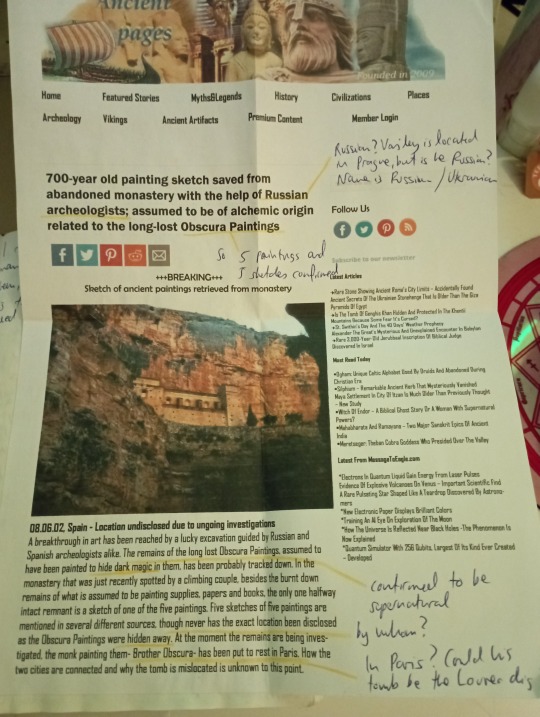
Transcript of the first and second page:
First of all the data on the art, which was found in an abandoned monastery with he help of Russian archeologists; Vasiley is located in Prague, yet his name is Russian or Ukrainian which could mean he was in the excavation team. Also, the title confirms that there are indeed 5 paintings with 5 sketches of each- the so called Obscura Engravings. The paintings are supposedly on top of black magic imagery to kind of seal them. There were also painting supplies and books in the remains of the building, but none knew they were in there since they were mentioned in history yet hidden away. It's also no coincidence I think that Brother Obscura- the monk who painted them- was put to rest in Paris. Something tells me he could be in/under the Louvre, couldn't he?
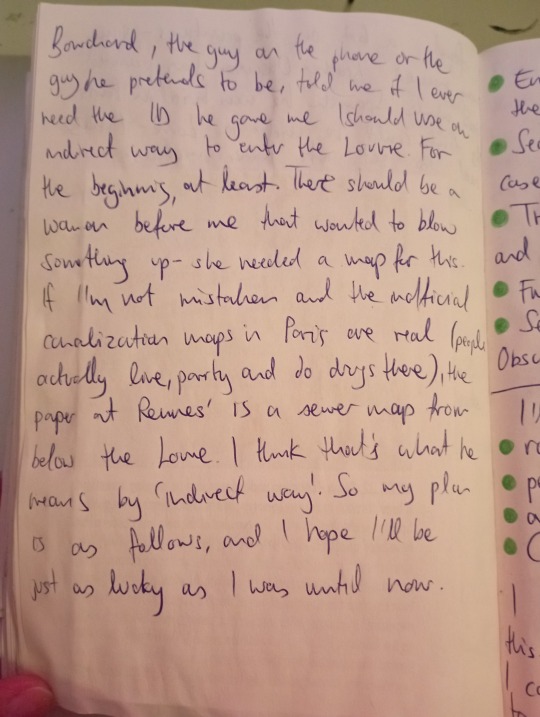

Transcript of the third and fourth page:
So. The guy on the phone who was likely Bouchard or not told me if I ever need to use the ID he gave me I shouldn't use the official way in, but rather a less public one. There apparently was a woman talking to him that mentioned to blow up something where she needed a map- he suspects she meant the Louvre. It has to be Lara Croft, no doubt! it has to be her. She's onto something. So the map I have looks like a swer map, it fits exactly the one below the Louvre. So I'll bite the bait and assume he was sincere, so here's my plan:
Enter the Paris sewers close to the museum
Search for markings on the wall since the map is ambigous
Tricky part: slip inside the Louvre and pretend to work there
Find the archeological dig Carvier mentioned (and her office)
Search for Brother Obscura and the Obscura Paintings
What I'll take with me: rain boots, pepper spray, a first aid kit, and a fake ID that could very well be a real one, who knows where Bouchard gets his stuff from. I might have taken money from Rennes place and told my work place I am sick, but this is now more pressuring.


Transcript of the fifth and sixth page:
Someone littered the place with corpses and I suspect it has to be...Miss Croft. The sewers were the correct clue, they lead to the cellar of the museum and she has blown a hole into the cellar to enter before me. There are so many photos of mystic symbols, paintings and sketched, I documented that all. There is also a really heavy metal door close to the dig leading...somewhere.
Here is the photos I could take. I was in a hurry and didn't have much time, but here is anything I found somehow important. People were lying on the floor and I didn't touch them. I just passed by and avoided them. It was the yuckiest thing ever and I am impressed to not have faced police yet. On the pcs of the excavation were writings and measurements open I couldn't tie to anything, only once I saw the Lux Veritatis symbol. If the door really leads to a tomb it could be one of them, or the monk's?
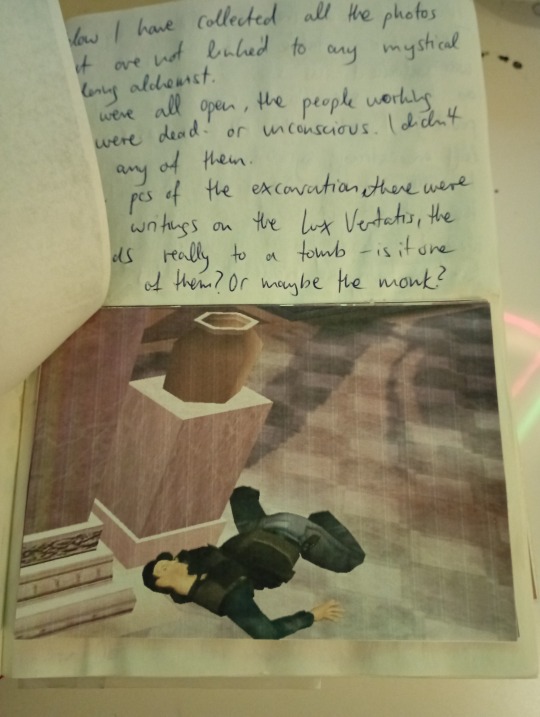
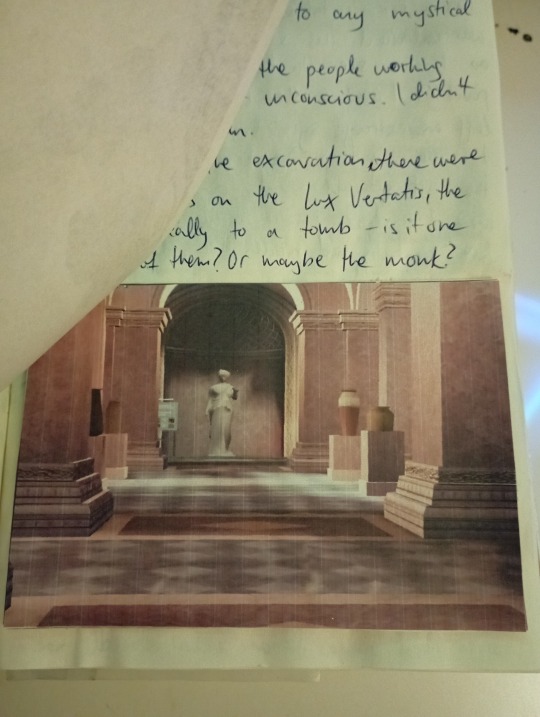
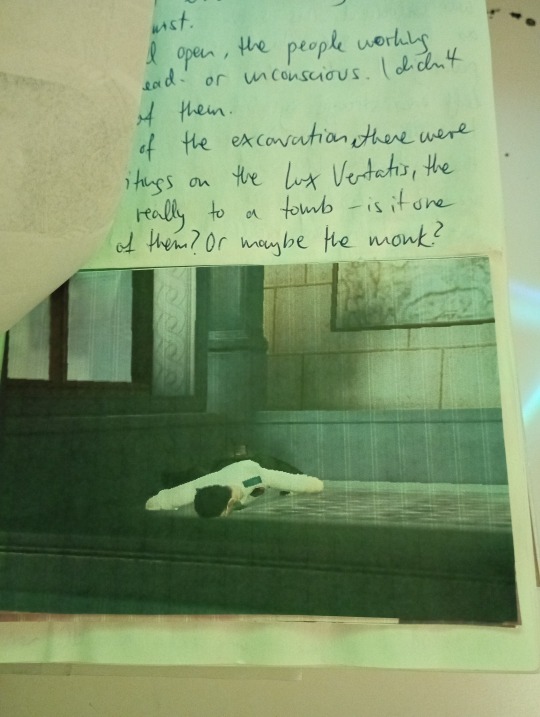

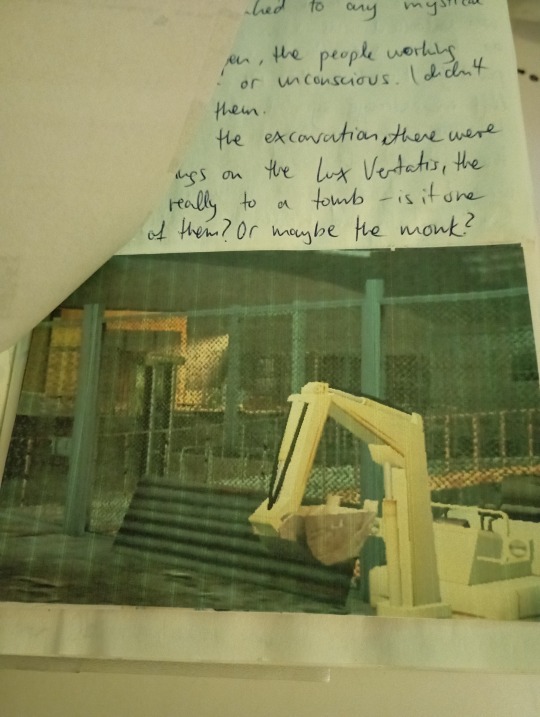


That's the most important ones I've taken. I found the office thanks to the signs and here's what I collected. Trust me, it feels like shit digging through a dead person's belongings while having to hurry up.
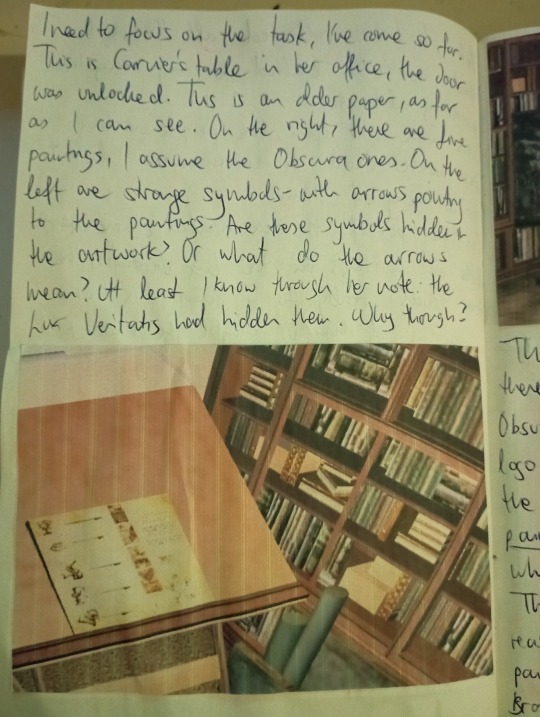

Transcript of the seventh and eigth page:
The door to her office was unlocked. Croft was here, of course, before me. Whatever she took with her I don't know and I can only work with what I have. She has an ancient paper on a second desk, I think she examines her findings there. On the right there are five paintings, probably the Obscura ones. On the left are strange symbols with arrows pointing towards the paintings. I know I suspected the Sanglyph being hidden, and it is divided into five elements. Could these also be hidden in the art, one in each? Through her notes I can assume the LV have hidden them. But why hide the Sanglyph parts? Why not use it...well, do they know how to do that?
On her main desk was information on Brother Obscura and, more importantly, she had a file open with Vasiley's logo, there has to be a link in between all of this, somehow. It said the monk was ordered to paint over the art and then they were called after him. The paintings were also hidden away. So they hide parts of the Sanglyph in the paintings and hide them away...for what?
When I finsihed with her office I went back to the dig and tried to find somethink more in case I overlooked information. There's a bit more strange things I found, I'll take notes as soon as I can. I know I could have searched more thoroughly but I'm afraid of running into the police. They wouldn't believe me if I started with black alchemy and angels. Who would, for real.
#angel of darkness#classic tr#tomb raider#traod#tomb raider series#lara croft#journal#aod#tomb raider angel of darkness
3 notes
·
View notes
Text
Anna Husarska: Expel Russia from UNESCO

ANCHORAGE – Russian President Vladimir Putin has been particularly angry lately, and the Ukrainian port city of Odesa has been suffering the consequences. In the Kremlin’s neo-imperial view, Odesa has long been a symbol of the Russian character of Ukraine’s south, because its initial development was led by Catherine the Great. Last year, Putin himself described it as “one of the most beautiful cities in the world,” with “wonderful traditions and history.” But for Putin’s criminal regime, nothing is sacred.
His fury became apparent on July 17, when he terminated the Black Sea Grain Initiative, a United Nations-backed agreement, signed in July 2022, that enabled Ukraine to export wheat, barley, and other foods from the Port of Odesa, as well as the ports of Chornomorsk and Pivdennyi. The notion that Putin has any say over Ukraine’s ability to export goods that it produces, on its own ships, from its own ports is absurd. But he gets away with it by threatening to behave even more criminally than he already has: the northwestern Black Sea, Russia’s foreign ministry has declared, is “dangerous” again.
Tkachenko dismissal: Why was Ukraine’s culture minister controversial?
On July 27, Ukraine’s Parliament, the Verkhovna Rada, dismissed Oleksandr Tkachenko from the post of minister of culture and information policy in a vote of 321 to 2. The issue came to a vote after the Parliamentary Committee on Humanitarian and Information Policy rejected Tkachenko’s resignation o…

The Kyiv IndependentElsa Court
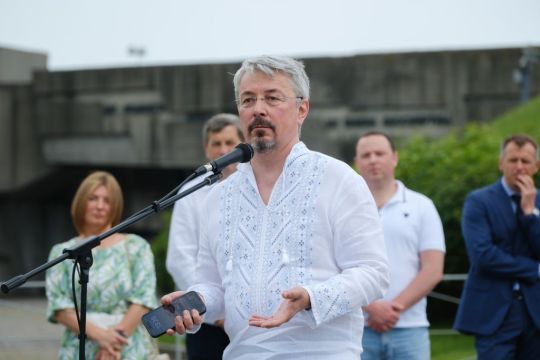
That same day, Putin began to rain bombs on Odesa. The missile and drone attacks initially targeted grain terminals and other port facilities, resulting in major economic losses, including the destruction of 60,000 tons of grain. Russian strikes have also been directed at several buildings on Pereulok Nakhimova, a lovely lane located at the end of a fabulous six-mile-long (ten kilometers) tree-lined promenade, often enjoyed by local cyclists like me. From here, Kanatna street – where the Russian poet Alexander Pushkin often visited his friend Ivan Blaramberg – leads to the heart of the city.
The assault shattered the glass of China’s consulate on that lane and damaged the nearby archeological and literature museums. Soon after, Russia destroyed the House of Scientists – formerly the Palace of Count Tolstoy – and 24 other architectural monuments.
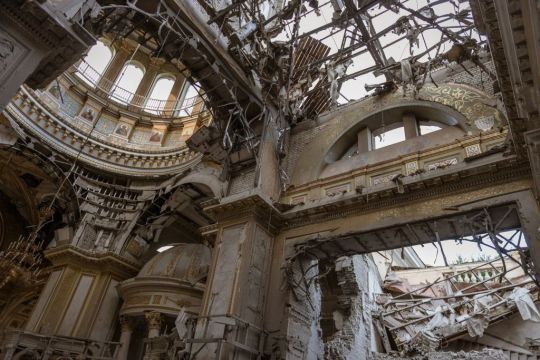
The destruction caused to the Transfiguration Cathedral in Odesa, Ukraine, by the Russian missile attack on July 23, 2023. (Photo by OLEKSANDR GIMANOV/AFP via Getty Images)
On the night of July 22, Russian missiles severely damaged the Transfiguration Cathedral on Soborna Square. It is a place I know intimately: “Soborka,” as locals call the square, is my address when I am in town. But Putin, too, has a kind of connection to it. The cathedral, which was destroyed by Stalin in 1936 and later reconstructed on Odesites’ dime, was consecrated in 2010 by Putin’s (and the KGB’s) collaborator Patriarch Kirill of Moscow, a Russian Orthodox bishop and Ukrainian-killing enthusiast. Unlike most Ukrainian churches, the Transfiguration Cathedral remained tied to the Moscow branch of the Orthodox church.
None of this – not Odesa’s historical and cultural significance, nor Russia’s deep links to the city – means much to Putin. As Kremlin spokesman Dmitry Peskov made clear, all that matters is getting revenge for Ukraine’s drone attack against the Kerch Strait bridge, which links illegally annexed Crimea to Russia. This should enrage all of us – not least the United Nations Educational, Scientific, and Cultural Organization.

The destruction caused to the Transfiguration Cathedral in Odesa, Ukraine, by the Russian missile attack on July 23, 2023. (Photo by OLEKSANDR GIMANOV/AFP via Getty Images)
As of January, UNESCO’s World Heritage List includes the historic center of Odesa, which contains Pereulok Nakhimova, the charming lane that Russia just attacked. One can find Pereulok Nakhimova on Google Maps, and even take a virtual stroll down it, as it was before the Kremlin’s recent assault. I found it on my old map from 1914, when it was called Baryatinsky. More importantly, it is on the map of the “historic center of the port city of Odesa.” Shouldn’t UNESCO be furious that Russia, a member of the organization since 1954, has bombed it?
Article 6 of the UN’s Convention Concerning the Protection of the World Cultural and Natural Heritage commits the parties “not to take any deliberate measures” that “might damage directly or indirectly the cultural and natural heritage” in other parties’ territory. Surely, no damage can be more deliberate than that caused by targeted missile strikes.
In Lukashenko’s Belarus, Belarusian culture is not welcome
While Belarusian is one of the two official state languages in Belarus, the decision to speak, read, and write it can be a dangerous choice for Belarusians. Growing up, the Belarusian poet and translator Valzhyna Mort was aware of how the Belarusian language was perceived in her country. “Belarusi…

The Kyiv IndependentKate Tsurkan

UNESCO has condemned the Russian attacks on Odesa, noting that they took place just two weeks after the strike that destroyed a historic building in Lviv. But it should go further, expelling Russia for as long as the Kremlin continues its criminal behavior. (And that behavior extends well beyond destroying Ukrainian cultural and heritage sites: Lest we forget, Putin has been indicted by the International Criminal Court for war crimes).
There is no legal provision for such a move in UNESCO’s charter. When UNESCO was created, nobody imagined that a distinguished member would invade a neighboring country, murder its people, deport its children, destroy its cities (including those protected by the Convention), and become an international pariah. But this does not mean that a mechanism for ousting criminal states cannot be created. The UN has improvised before.
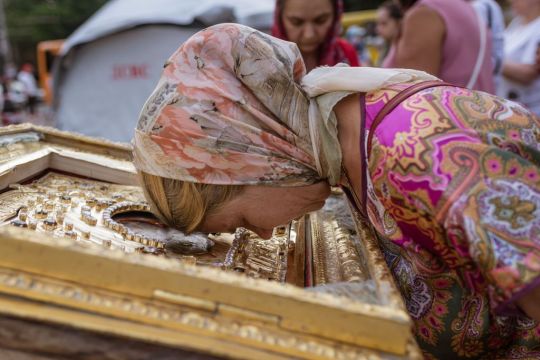
A woman prays at the Transfiguration Cathedral after Russian missile strike in Odesa, Ukraine, on July 23, 2023. (Photo by Andre Alves/Anadolu Agency via Getty Images)
Ukraine has been part of UNESCO – and the entire UN system – from the very beginning, initially joining alongside the USSR. Russia became a member only after the Soviet Union’s dissolution, and there was never any legal provision for Russia to fill the UN Security Council seat that the Soviet Union had previously occupied. Moreover, unlike Russia, Ukraine has respected all of the agreements associated with its membership in the UN system. There is, in short, a wealth of legal arguments to justify Russia’s expulsion from UNESCO. With Russia attacking Odesa daily, it is time to invoke them.
Editor’s Note: Copyright, Project Syndicate. The following article was published by Project Syndicate on July 31, 2023, and has been republished by the Kyiv Independent with permission. The opinions expressed in the op-ed section are those of the authors and do not purport to reflect the views of the Kyiv Independent.
Submit an Opinion
0 notes
Photo

Sketches made by Vikentiy Khvoyka, a Czech-born Ukrainian archaeologist, who discovered the Neolithic Trypillia culture of Ukraine, at the dig near the village of Veremya, Kyiv Region, 1897
#Vikentiy Khvoyka#archaeologist#Trypillia#Neolithic#sketch#Veremya#Kyiv#Ukraine#Ukrainian archeology#vintage archeology#Archeological dig#1890s
78 notes
·
View notes
Text
"If you take school and university textbooks, which list nations, it is written there that the French were born in the early Middle Ages, the English, the Poles, they all lead from there. And for some reason, we [Ukrainians] need to have origins from the 14th century. The question is, why? Was there any hiatus between the 12th and 15th centuries? No. The population has not changed...
They say, "Tatars used to go here"! The Tatars used to go here, but the Tatars did not sit down here because the Tatars and Mongols needed the steppe. They imposed taxes, and they themselves fled into the steppe.
It should be said that there is no hiatus, which Moscow archaeologists insisted on, and the absence of this hiatus was proven by Soviet archaeology in the 60s and 70s, that there was no depopulation here. Kyiv is an ancient Ukrainian city, just as Kyivan Rus is an ancient Ukrainian state. Why? Because general historical laws. The first stage of European ethnic groups existed - this is the tribal stage. From the 500s to the 900s, about 400 years, all these ethnic groups - the English, the French, the Poles, the Ukrainians, the Serbs - did not have a single ethnonym, they consisted of separate tribal unions. The tribal stage of existence is the entire early Middle Ages. The English consisted of Angles, Saxons, and Jutes. The Poles consisted of five tribes - the Kashubs, the Mazovshans, the Slenzyans, the Vislyans, and the Polyans. And from these tribes five dialects are now left in the Polish language. And the Ukrainians consisted of Polyans, Drevlians, Volhynians, Ulychis, Carpathian Croats... Europe is maturing somewhere in the year 900-1000, and all these peoples are creating their first aristocratic national states. The first English kingdom arises in the year 1000, around this time, the first Polish kingdom of the Piast dynasty arises. At the same time, the Prague principality of the Czechs emerged, at the same time, the Serbian state and Rus, with its centre in Kyiv, emerged. That is, this is a universal regularity. Since all these states that I have listed are considered Polish, English, Serbian or Spanish states in the medieval stage of development in the textbooks of these countries, we have no reason to doubt the Ukrainianness of Rus. Who wants to doubt - please break these universal laws.
You know that Meshko the First lived in the time of Volodymyr the Holy, and his son Boleslav the Brave - in the time of Yaroslav the Wise. So, Meshko the First and Boleslav the Brave are Polish kings, but try to tell someone that Volodymyr the Holy or Yaroslav the Wise are Ukrainians. You will be spit on! Moreover, by the Ukrainians themselves. And, by the way, all the walls of Sophia of Kyiv are covered with Ukrainian texts, Serhiy Vysotsky also spoke about this. Before his death, he called me and told me that there were Ukrainian texts there, but it was impossible to write about it. In the book he published, all this is translated into Russian.
What elements are there on the walls? Наприклад, клична форма української мови – «Петре», «коню», «князю», що питомо українське, в російській мові цього немає. Дієслова на «-ти» – іти, ходити. Дієслова на «-мо» – живемо, ходимо. Давальний відмінок однини чоловічого роду – князеві, Петрові, Іванові.
Vasiliy Klyuchevskii, a great russian patriot, when asked what language the prince of Kyiv spoke, he said: the language that grandmothers speak in the bazaars in Kyiv now. There are a huge number of these proofs in this regard.
Agatangel Krymsky also wrote about these linguistic features. He has an article about what language was spoken in princely Kyiv. He composed a phrase from the words of the 12th century and accompanied it with the following words: no Moscow professor will understand this phrase, and any grandmother from the Kyiv bazaar will. The phrase sounded like this: «Кицька сидить на призьбі, доки її окропом з глека не злякають або хорти лови не влаштують».
So, summing up, princely Kyiv was as much Ukrainian as London was English, Gniezno was Polish, and Paris was French. These were not Ukrainians, Frenchmen, or Poles as they are now. Because it is an organism, and the organism develops. And these were Ukrainians, Poles, and Englishmen at that medieval stage of development."
Leonid Zaliznyak
62 notes
·
View notes
Photo




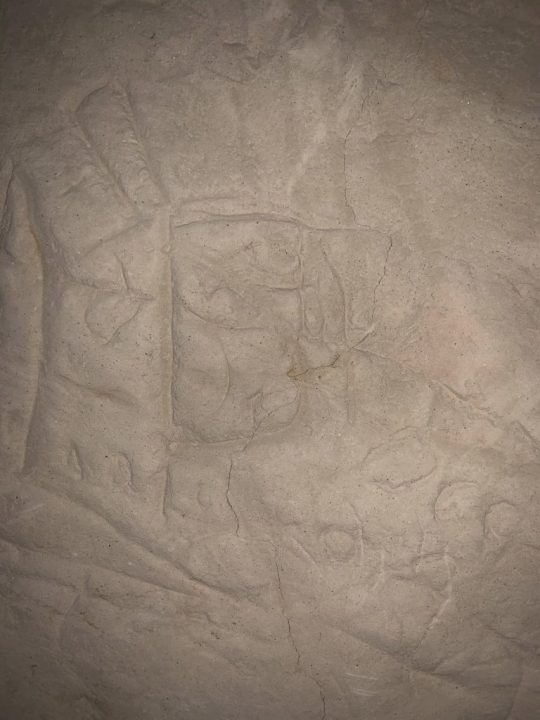

An Ancient Cave Complex Discovered in Kyiv
Dmytro Perov, a conservationist at Kyiv’s Center for Urban Development, told Radio Kultura that the caves were discovered next to a demolished house that Kyiv housing authorities had deemed unsafe for habitation.
Actually, Dmytro Perov followed his grandmother’s clues. Perov’s grandmother used to talk about a large stone house next to an old cave, but no one knew its location of it. According to Perov, who had previously examined the area several times, only the front facia of the house remained, concealed by bushes.
The conservationist told reporters that he and his friends decided to go to the old house “on a small expedition to look for caves,” and they discovered an entrance. The first archaeological explorations in the Voznesensky Caves were carried out by Perov and a group of researchers from the Institute of Archaeology last Saturday. Timur Bobrovskyi, an archaeology professor at the Sofia Kyivska reserve, said he was “amazed that such a treasure was found in the center of Kyiv” after spending three hours exploring the cave.
The team discovered pottery fragments from the Late Kyivan Rus’ era, an Eastern and Northern European state that existed from the late ninth to the middle of the thirteenth century, in the cave’s northern section.
Perov wrote on Facebook that the team scoured around 40 meters (131 feet) of caves, including the lower cave complex, which he claims is twice as long as the upper passage and has a series of “radial branches.” The most significant discovery, according to Petrov, was “a set of Kyivan Rus hieroglyphs and Varangian symbols from the Early Rus period,” when the region was under the control of Varangian rulers.
While more investigation is required to confirm it, according to Dmytro Perov, they think that some of the carved symbols may date all the way back to the fifth or sixth centuries BC. He says that “animistic images of animals and graffiti” from the Varyaz period, including the rune Algiz (“chicken’s foot”), were also discovered on the walls. This was an ancient Varangian charm, a symbol of safety and longevity.
Several Hellenic Greek colonies were established on the northern coast of the Black Sea, on the Crimean Peninsula, and along the Sea of Azov between the 7th and 6th centuries BC. The steppe hinterland was occupied by the Cimmerians, Scythians, and Sarmatians who traded with the Greek/Roman colonies after a period of control by the Roman empire during the first millennium BC.
Rurik, a Varangian or Viking prince, established the Kyivan state in the latter part of the ninth century. Up until the 13th century, his descendants established and controlled a global trade route to the west. However, the Kyivan state was made up of East Slavic, Norse, and Finnic peoples, making it difficult to determine who left the carved symbols on the cave walls.
#An Ancient Cave Complex Discovered in Kyiv#Late Kyivan Rus’ era#archeology#archeolgst#ancient artifacts#history#history news#ancient history#ancient culture#ancient civilizations#ukraine#ukrainian history
28 notes
·
View notes
Text



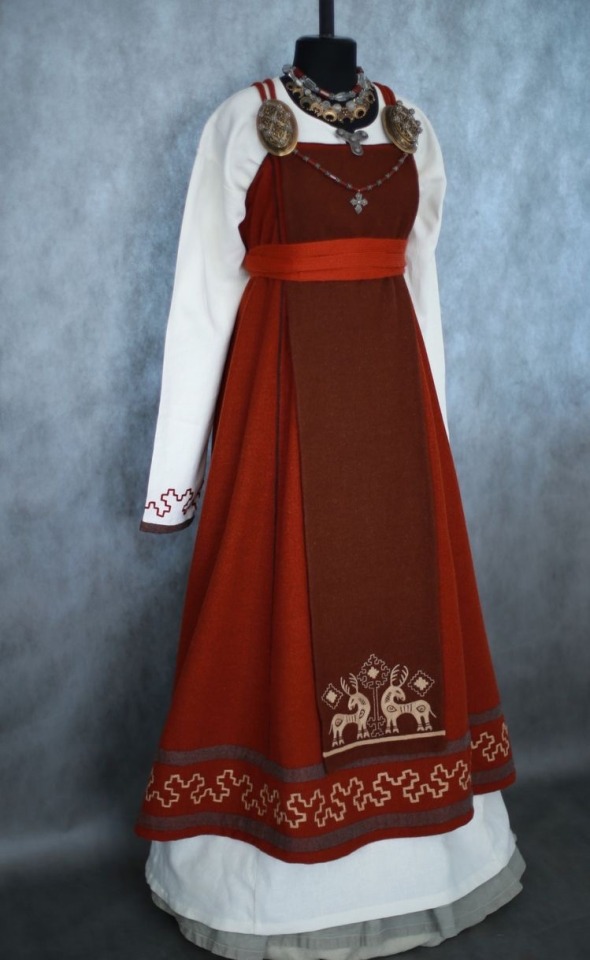
Work by Savelyeva Ekaterina
#slavic#slav#slavs#belarus#ukraine#poland#russia#ukrainian#polish#russian#history#archeology#historian#archeologist#medieval dress#medieval outfit#medieval#middle ages#early middle ages#viking#vikings#rus#kievan rus#panova#paneva#living history#reenactment#reenactor#reenacting#slavic costume
129 notes
·
View notes
Photo

[Image description: These magnetic anomalies in the soil at a site called Maidanetske clued the researchers into the existence of the megastructure that they eventually decided to excavate.]
Mysterious Megastructures of the Elusive Tripolye Culture Unearthed in Ukraine
The excavation of a Stone Age community center in Ukraine is helping explain why large groups of tens of thousands of people flourished and then fell more than 5,000 years ago.
The "megastructure" excavated in Ukraine was large compared with the houses around it, though not particularly huge by modern standards. At 2,045 square feet (190 square meters), the structure was the size of a modest American home. However, some Eastern European megastructures were up to 18,000 square feet (1,680 square m) in size. Archaeologists have puzzled over these buildings, many of which have been discovered through methods that use magnetic anomalies in the soil to detect ancient structures. Now, the actual excavation of this one megastructure at a site called Maidanetske reveals that these buildings were used for everyday activities, like food preparation, storage and meals.
"It is similar to activities performed in normal houses," said Robert Hofmann, an archaeologist at Christian-Albrechts University in Kiel, Germany, who led the new research. "Somehow the intensity of these activities between normal houses and these megastructures is completely different."
The megastructures were constructed by the Tripolye culture, a civilization that stretched from the Carpathian Mountains to the Dnieper River during the Stone Age. From about 4100 B.C. to 3600 B.C., the Tripolye people built large communities called megasites, which consisted of thousands of houses. Maidanetske, in modern-day Ukraine, had 3,000 individual homes, though it's not clear if they all existed at the same time or if there were phases of demolishing and rebuilding. Thus, the population of these communities tends to be hard to pin down, Hofmann told Live Science. Maidanetske may have been home to as few as 5,000 people or as many as 15,000, he said.
Archaeologists also debate whether the megasites were year-round settlements or seasonal gathering spots. The Tripolye people were farmers who cultivated cereal grains, Hofmann said, as well as herders who traded mainly in cattle. They hunted wild game as well, though evidence for hunting declines over time, such that domesticated animals were more often used for food during the era of the megasites. (Some scientists believe the wheel originated with the Tripolye culture.)
The houses in Tripolye megasites were typically arranged in concentric circles, occasionally dotted with plazas anchored by the large rectangular buildings that archaeologists have dubbed "megastructures." Hofmann and his colleagues compared their Maidanetske excavations with magnetic and archaeological data from 12 other megastructures in Maidanetske and 104 others from 19 different sites across Eastern Europe.
The Maidanetske megastructure consisted of one roofed-in section and one slightly larger open-air walled courtyard. It dated to the 38th century B.C., the researchers report today (Sept. 25) in the open-access journal PLOS ONE. The walls were made of clay-covered split wood and logs, and a raised fireplace sat in the enclosed part of the building.
Scattered throughout the structure, the archaeologists found pottery , including sealed jars and kitchenware. There were also bones scattered near the fireplace, presumably from a last meal before the building was abandoned. (Most waste went into a pit, or midden, near the building.) Archaeologists also found other flotsam of everyday life: a polishing stone, a whetstone and a loom weight.
The building was very different from the houses at the time, which had a smaller footprint, were 2 stories tall and always contained both a fireplace and an oven, Hofmann said. By mapping out the locations of megastructures in different Tripolye settlements, the researchers found that the buildings were strategically placed. Smaller ones were found around peripheral rings in the settlements, while larger ones were in more central spots. It seemed that there may have been different levels of assembly places for different segments of society, Hofmann said.
Over time, he said, the smaller megastructures disappeared from the settlements, leaving only the largest in use. This change may provide some hint of centralization — and that centralization may have eventually spelled doom for Tripolye's big-city ways. Between 3650 B.C. and 3500 B.C., the megasites dissolved, and the people of the Tripolye culture returned to living in smaller villages. The lack of low-level assembly places before this change might indicate that ordinary people became less and less involved in the government of the community, ultimately leading to its dissolution.
The researchers are now trying to get a better sense of how megastructures differed from region to region and how they were used on a daily basis. Hofmann's team just excavated a trash pit from a megastructure in Moldova, and they are working to compare the contents of the pit with the content of waste pits from normal houses.
"We can already feel differences," he said, "but we need quantification of different finds and closer analysis."
Source
Further reading Another megasite in Ukraine, in the current village of Nebelivka and another, younger megasite in Uruk.
3 notes
·
View notes
Photo
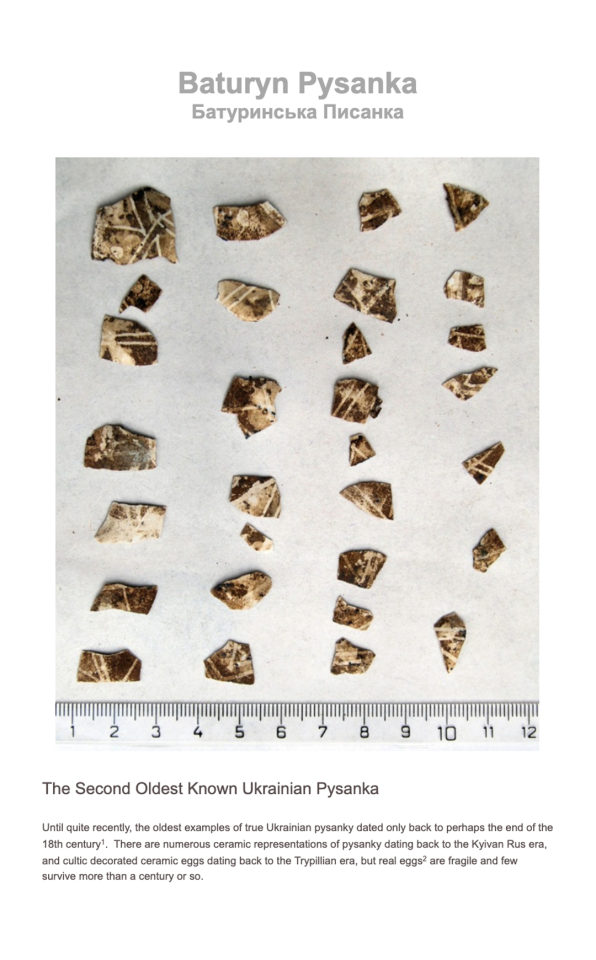
In 2008, during excavations at Baturyn, the oldest existing chicken egg pysanka was discovered, and this date was pushed back. Per Ukrinform:
Chernihiv: Oldest Ukrainian pysanka found by archaeologists in Baturyn
This unique find was made by archaeologists currently working in Baturyn. This is a real chicken egg-pysanka, that by some miracle was preserved in layers of late XVII century Baturyn.
Since the most ancient pysanky previously found on the territory of Ukraine have dated only to the end of 18th or early 19th century, the Baturyn egg should be considered the oldest, according to Volodymyr Kovalenko, the head of the archaeological expedition (Department of History and Archeology of Ukraine, Shevchenko State Pedagogical University of Chernihiv).
He explained that Easter eggs, a common attribute of Christian worship, are often found by archaeologists. Easter eggs from the period of Kyivan Rus, for example, are made of stone, clay or bone, and are small versions of those made from real eggs. The Baturyn egg is a completely natural blown-out eggshell, colored with a gray-blue dye, and decorated with geometric ornaments. And even though the egg is crushed, it is archaeologically complete and can be restored. To do this, according to Viktor Kovalenko, they will make an artificial egg out of paraffin or synthetic resins.
Currently, the remains of this earliest known pysanka are being restored at the State Historical and Cultural Reserve "The Hetman Capital".
Natalia Potapchuk, Ukrinform
Baturyn was the capital of the Kozak Hetmanate, an autonomous Kozak republic in Left-bank Ukraine, from 1669–1708 (and again from 1750-1764, after being rebuilt). In 1708, the Kozaks were caught in the midst of the Great Northern War, in which Hetman Mazepa supported Sweden and its war with the Russian Empire, and fought for Ukraine’s independence. On Nov. 13, 1708 Baturyn was sacked and razed by the Russian army, and all of its inhabitants were slaughtered. Historian Serhiy Pavlenko estimates that 6-7.5 thousand civilians and 5-6.5 thousand military personnel were murdered. The population of the city in 1708 had been 20,000.
SInce this pysanka was found in the ruins of Baturyn, it must date to 1708, the year Baturyn was destroyed, or earlier.
It will be interesting to see what this pysanka looked like, once it has been put back together.
The Soviet regime did its best to eradicate not only the practice of pysankarstvo from Ukraine, but to eradicate pysanky wholesale from Ukrainian consciousness.
Why? .... https://www.pysanky.info/History/Soviet.html
119 notes
·
View notes
Text
I feel like I might be the only nerd who caaaaares, but hey, that what this void is for. So Yeah How Andronika* Became Andromache the Scythian
*Because I know that its technically a typo from where the author changed his mind about the protagonists name, but fuck it I like it so its my HC now
Basing my guesses of the tiny hints we get out of the comics I more or less settled on this as a cultural path for Andy. I think its a fair assumption that what ever her birth name was is 100% lost to time given the fact that she seems to have chosen to base her extant persona on her time as a Scythian
Andy is born into Dnieper-Donets culture 5000-4200BC.
I’m guessing for the sake of simplicity around Deriivka, since the burials there have the sort of ancestral genetic linkage that spans from 7000 bc to 2700 bc. This technically makes Andy Ukrainian. Andy is born in roughly 4836.
Sredney-Stog 4500-3500BC- Deification
These are the folks who are known for starting the process of domesticating Horses and Andy would have had a hand in that presumably, Also stone axes were a thing so She’s been working with that tool for damn near her entire life. We are still pre Kurgan Burials at this point. The bridge of time between this group and the next is the one that Andy spends as a Warrior God leading her people and given that these are the direct descendent of the culture she was born to, it makes sense that she would feel aligned enough to them to not only fight for them but to lead them. We don’t hear of her doing that ever again after this point
Yamnaya- 3300-2600BC
Here we start looking as the end of Neolithic cultures towards the first big shift of Andy’s life (apart from the whole immortality thing) metallurgy. Bronze Age baby! This culture is also generally identified as the most likely cultural base for the Proto Indo European Languages, so from this point on, likely until she meets Quynh every language around her will be building off of this base, so its probably less learning a new language and more expanding her vocab. This is where the kurgans start, and at this point the culture is still working on that horse domestication thing
Poltvaka 2700 2100BC
An outgrowth of the Yamnaya culture, firmly on the Russia side of things. Andy claims the Russians to be partially descended from her people so in general I deferred to that when things diverged. These folks stepped up their production and skill levels with metal and linguistically they are considered to be one of the higher branches on the Indo-Iranian Tree. Another trend in the cultures I leaned towards was picking the ones that spread the best, because I feel like having an immortal warrior among you number would not only be good for morale but once the legends of immortal warriors start flying more folks would probably look to assimilate instead of fight
Abashevo 2500-1900BC
These guys once again expand on the skills in metalworking and also get around to hitching horses to things for speed, they are early adopters of the chariot. We are firmly in the Proto-Indo- Iranian language group, and these guys are warlike, noticeably so. People are wearing metal decoratively as a social signifier. We start seeing signs of shared culture with the Greeks here too. Given the Greek roots of Andy’s chosen name I think it would be safe to say that Andronika comes into play here
Andronovo 2000-900BC
This period is really a massive chunk of overlap spread out across a bunch of linguistically distinguishing subgroup but I point it out because the Andronovo culture has a both a hilariously apt name but its an archeological horizon that stretches all the way into Northwestern China at its greatest breadth, and Towards the end of this cultural horizon (in the 1200′s) Quynh dies her first death. Probably a coincidence, but still really fucking cool, that Andy is potentially having sustained contact with proto Asiatic languages and people groups at the time when she starts dreaming of Quynh. Also this means the language barrier between them might not have been too vast!
Srubnaya1800-1200BC
For the history meme geeks playing along at home we are firmly in the time of Ea-Nasir and his shitty copper(1750) Burials are now being done in timber frameworks inside of burial pits under kurgans. Language is firmly Proto-Iranian. This pocket culture within a culture is relevant specifically because it shows a ton of influence on the Scythian culture, which was one of many to come out of the Andronovo group and when this culture group died it left the Cimmerians and ...
The Scythians 900-200BC- Deification/ Assimilation?
Andronika has become Andromache! The Scythian sub group eventually subsumed and assimilated most of its brother/sister groups from the Andronovo culture as the Scythians spread their territory. This is when Andy was worshipped as a God and there are few options there. There’s Tapati a political guardian, but also a goddess of the home, which may account for why Andy felt so ill suited for the role, The comics also have her refer to herself as a Goddess of War, and the context clues there link that to her formative years as an immortal, before formal worship, and before she decided to walk the earth looking for Quynh. This in a funny was might also account for the fact that Herodotus mentions a war god of the Scythians, literally Scythian Ares, the only god that Scythians practiced physical worship/sacrifice to and the only Scythian God who he uses a Greek name for. Scythian myth also puts a lot of stock in the idea of a First Man or an ancestor to their Kings and People. Andy may have been seen as a living incarnation of this being esp. considering the apparent genderfluid nature of the priesthood.
The Scythian culture is still largely nomadic, and still living on the steppes but they have contact with Greece Persia India and China. They have distinctive metalworking styles that are being used for art. Scythians are apparently damn good guerilla fighters and possibly developed there own from of writing. The Scythians are another war like people but there’s no telling if Andy chose to have a role in that. I’d think its a pretty safe bet though. Its noted that the engaged at war with almost the entirety of their adult population, including women, and that “no people in Europe or Asia could resist the Scythians without outside aid,” which sounds par for the course.
By the end of the Scythian civilization, Andy is likely long gone. Depending on how long you think it took Andy to find Quynh, it could be anywhere between 1031 bc at the best and 600bc at the worst. By the Time Lykon comes around in roughly 331bc, Andromache has almost certainly decided to stop hanging out with mortals and to just chill out with her wife, wrecking the shit of those who deserve to have their shit WRECKED.
There are also a ton of other cultural groups that Andy may have spent time in or rubbed shoulders with. Hell, if she was as paranoid then about not being recognized as an ageless immortal as she is in canon she was probably bouncing from one culture group to another generationally and that the reason why they all have so many similarities. 4600 years of one woman’s accidental influence. ¯\_(ツ)_/¯
So yeah that was a today’s rabbit hole. I have the faintest inkling of names i might choose for Andy before Andy so technically I accomplished what I set out to do!
#the old guard#the old guard meta#if anyone ever wants to write about Andy sitting down and getting drunk with Herodotus#and then later bitching about how he took all of what she said out of context#i would like to see it#andromache the scythian#history#if you know history better than me feel free to get all up in this post and its notes.#i fucking love this shit#but i was not opening jstor because then i would have lost my entire night#not just......3.75 hours
319 notes
·
View notes
Note
Do you have any research recommendations for people interested in the Scythians?
Combining this with this anon:
I’ve been learning a lot about Greek mythology recently and man were the Greeks confused about Scythians
Finally, my time to rant about the Scythians has come ;)
I first read about them in Herodotus, and yeah, as anon says, man there was some confusion there. (Though not as much as you’d think - a fair bit of Herodotus’ Histories are actually accurate, though a little muddled at times. The challenge is separating fact from fiction.) Even so, I’d highly recommend Book 4 to anyone interested in the Scythians, as a basic introduction as well as a glimpse into how the Ancient Greeks saw them. Beyond that, your reading will depend on what you want to research: the Ancient Greek understanding of the Scythians, or Scythian culture itself. As you can expect, those are two very different things.
If you’re interested in Ancient Greeks views of the Scythians, there is an abundance of information, most of it drawing heavily from Herodotus. I would advice you to steer clear of non-academic sources, because many of them are saturated with “were the Scythians the real Amazons?!?” and “lol these ancient people smoked weed and had tattoos”. (The weed and tattoos are true, but most articles about them are more invested in presenting the Scythians as proto-hipsters than in discussing the cultural and religious implications of those things, which is cool, I guess, but that’s not academic research.) As always, make sure that the author is a Classicist who knows what they’re talking about.
Here is an example of a JStor article that discusses the Scythians in the context of a myth presented by Herodotus. This article tells you about Herodotus’ portrayal of Scythian history and how it can be interpreted; it does not, however, tell you anything about actual Scythian history.
If you’re interested in the historical people and their culture, you’re better off turning towards archeological and epigraphic sources. Note that the further you go down this wormhole, the more likely you are to need some Russian skills (if not skills in another Slavic language, like Ukrainian or Bulgarian), for the simple reason that Scythian archeological sites are located in Eastern Europe and Central Asia, and most archeologists working on them speak Russian. In fact, I’d go so far as to say that if you don’t encounter any Slavic scholars at some point along the way, you’re probably not on the right track. This isn’t to say that studying the Scythians is inaccessible for an English-speaker - far from it - but comparatively speaking (especially when you’re coming from a field like Classics, which is studied by an enormous variety of people), a lot of information, translated or not, has been produced by people from the area.
Here is an example of an Academia.edu article that discusses Scythian history as reflected in coinage. This article tells you about the Scythian presence in the West Pontic area, as it likely factually occurred; it does not, however, concern itself with Ancient Greek literature and perceptions of the Scythians. (Note, also, the abundance of Russian sources in the bibliography.)
Ultimately, you’ll get the best picture of Scythian culture and history by combining the two approaches - the outside view, and the archeological and epigraphic traces. A truly excellent study will draw from both, fact-checking written sources with material findings, and interpreting material findings in light of written sources. A good overview can also be acquired by jumping from cited source to cited source, and putting the information together.
... or you can go to the steppe and have a chat with some Scythians yourself:

(Disclaimer: I’m not sure whether the stone people in this specific photo are Scythian in origin, but I know some of them were. I also can’t guarantee they will chat back, but it’s worth saying hi. Photo from the National Historical Museum of Dnipro, Ukraine.)
136 notes
·
View notes
Photo

Archeological dig in central Kyiv, 1981
#Ukrainian archeology#vintage archeology#Archeological dig#Kyiv#Ukraine#vintage photography#1980s#archeologist
72 notes
·
View notes